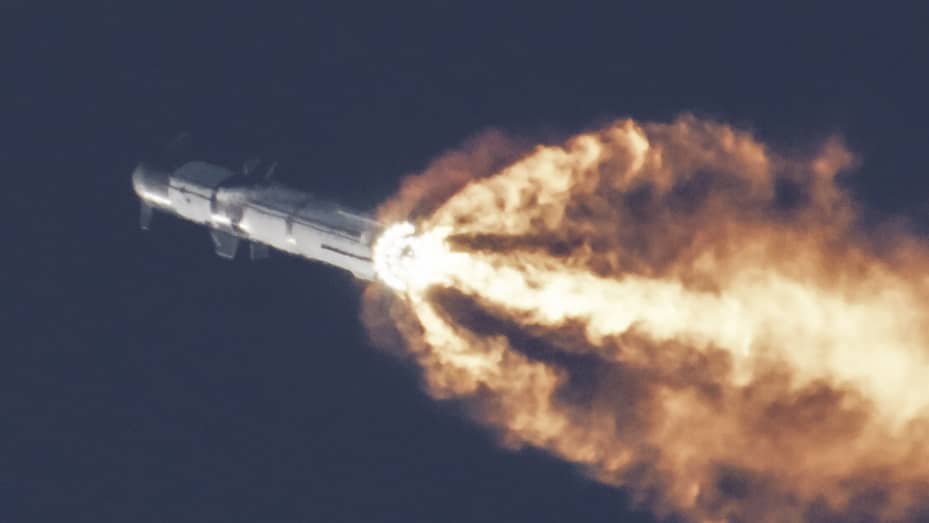SpaceX continues its relentless push towards global internet coverage with two successful Starlink launches in a single day. This impressive feat, completed on March 10th, 2024, marks the 23rd and 24th missions of the year for the company, solidifying their position as a leader in the satellite internet race.
Double Duty: Launching from Both Coasts
The launches took place just over five hours apart, showcasing SpaceX’s growing operational capacity. The first mission lifted off from Space Launch Complex-40 at Cape Canaveral Space Force Station in Florida, while the second one blasted off from Space Launch Complex-4E in California. This strategic use of both coasts allows SpaceX to optimize launch windows and expedite satellite deployment.
Starlink Takes Flight: Group 6 and Group 7 Get Boost
A total of 46 Starlink satellites were delivered to orbit across these two missions. The Florida launch deployed 23 satellites, designated Group 6-43, into a 42-degree orbital inclination. This specific inclination adds to the growing Group 6 constellation, designed to expand internet access services.
The California launch, on the other hand, carried another 23 satellites belonging to Group 7-17. These satellites boast a 53-degree orbital inclination, catering to different coverage needs. It’s important to note that SpaceX has recently increased the number of satellites per launch thanks to advancements in the Falcon 9 rocket’s capabilities.

Veteran Rockets Make Stellar Comebacks
The workhorse of these missions, the Falcon 9 rocket, didn’t disappoint. The Florida launch featured the B1077 Falcon 9, a seasoned veteran completing its 11th mission. This impressive feat signifies SpaceX’s commitment to reusability, a key factor in reducing launch costs and increasing mission frequency. Following a successful liftoff, B1077 gracefully returned to Earth, landing precisely on the droneship “Just Read the Instructions” after approximately eight and a half minutes.
The California launch also involved a seasoned Falcon 9, designated B1063. This particular rocket had previously completed 16 missions, with its last one occurring 47 days prior. Mirroring the success of its Florida counterpart, B1063 completed its 17th mission with a flawless liftoff and a smooth landing on the droneship “Of Course I Still Love You” just over 8 minutes after launch.
Redefining Reusability: Fairings Set Speed Record
The commitment to reusability wasn’t limited to the Falcon 9 rockets. The fairings, the protective shells that shield the satellites during launch, also played a crucial role. The fairings used in the Florida launch were the same ones that protected the USSF-124 mission a mere 25 days earlier. This marks a record-breaking turnaround time for fairing reuse, showcasing SpaceX’s dedication to maximizing efficiency.
Expanding Launch Horizons: California Gets 53-Degree Boost
Previously, Starlink missions with a 53-degree orbital inclination were exclusive to launches from California. However, thanks to a recent agreement with the Bahamian government, SpaceX can now conduct these launches from Florida as well. This agreement allows for greater flexibility in launch scheduling and opens doors for even more frequent Starlink deployments.

Crew 7 Returns Home: Splashdown Scheduled for Tomorrow
While SpaceX focuses on expanding its satellite network, another critical mission nears its conclusion. The Crew 7 astronauts, who have been stationed on the International Space Station for nearly six months, are scheduled to return to Earth tomorrow, March 12th. Having successfully undocked from the ISS, their journey back home will culminate in a splashdown of the Crew Dragon Endurance.
This successful double launch, coupled with the upcoming Crew 7 return, highlights SpaceX’s multifaceted approach to space exploration. The company is not only revolutionizing internet access but also pushing the boundaries of human spaceflight, solidifying its position as a leading force in the new space age.
The Future of SpaceX: Continued Innovation and Global Reach
SpaceX’s accomplishments this weekend are a testament to its relentless drive towards innovation and global expansion. Here’s a glimpse into what the future holds for this pioneering company:
Starlink Constellation Build-Out: With the addition of 46 Starlink satellites, SpaceX is steadily progressing towards its ambitious goal of blanketing the planet with high-speed internet access. The company is constantly refining its launch capabilities and securing necessary regulatory approvals to expedite constellation build-out. This will bridge the digital divide, offering internet connectivity to underserved areas and revolutionizing communication infrastructure worldwide.
Reusability Takes Center Stage: SpaceX’s commitment to reusability is not only cost-effective but also environmentally friendly. By reusing Falcon 9 rockets and fairings, the company significantly reduces launch costs and minimizes space debris. Expect to see further advancements in reusability technologies, potentially extending to upper-stage boosters like Starship, paving the way for even more sustainable and cost-efficient space missions.
Expanding Launch Capabilities: The successful launch from California demonstrates SpaceX’s ability to utilize launch facilities on both coasts. This strategic approach allows for greater flexibility in launch windows and mission planning. Additionally, the agreement with the Bahamas opens doors for more frequent 53-degree inclination Starlink launches from Florida. Expect SpaceX to explore partnerships with other countries and space agencies, further expanding its global launch network.
Human Spaceflight on the Rise: While Starlink grabs most of the headlines, SpaceX is also heavily invested in human spaceflight endeavors. The upcoming Crew 7 splashdown signifies the company’s growing experience and expertise in crewed missions. Looking ahead, SpaceX is gearing up for the Starship program, a fully reusable launch vehicle and spacecraft designed for deep space exploration. This ambitious project has the potential to revolutionize space travel, enabling missions to the Moon, Mars, and beyond.
Competition Breeds Innovation: The space industry is witnessing a surge in competition from established players and new entrants. This is a positive development, as it fosters innovation and drives technological advancements. SpaceX will likely continue to refine its existing technologies and explore new avenues to maintain its competitive edge.
In conclusion, SpaceX’s recent achievements showcase a company at the forefront of space exploration. With its unwavering commitment to innovation, reusability, and global expansion, SpaceX is poised to play a pivotal role in shaping the future of space travel, internet connectivity, and humanity’s push beyond our home planet.



















